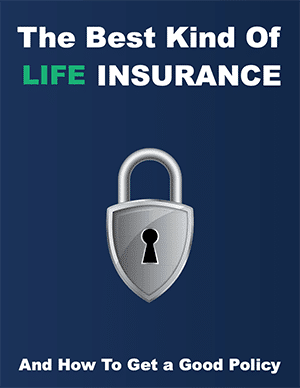702-660-7000
702-660-7000
It is a fact that 100% of all people will die. With that comes the necessity of life insurance. You need to find a way to provide for your family when the inevitable happens. As you look into life insurance, you have probably found there are many types of policies you can choose from. One of the most popular is level term life insurance. Term life insurance is life insurance coverage for a certain established period of time. We’ll walk you through how term life insurance works, the pros and cons, and everything you need to know to start looking for the right coverage.
Term life insurance is a type of life insurance that lasts for a set period, such as 20 years. If the insured person dies within this timeframe, the policy pays a death benefit to the beneficiary. This payout can be a lump sum or structured as annuities.
A common variant is the level term policy, where the death benefit remains constant throughout the policy’s duration. Alternatively, a decreasing term policy has a benefit that reduces over time, often yearly.
Some term life policies offer the option to convert to permanent life insurance (like whole or universal life insurance) at the term’s end, without needing a medical exam. However, these permanent life policies are generally costlier.
Renewability is another feature some insurers offer, allowing policyholders to extend their coverage beyond the initial term without further medical evaluation.
The National Association of Insurance Commissioners (NAIC) notes that some term policies include a return of premium (ROP) feature. This means if the death benefit is not paid out by term’s end, the policyholder may receive all or part of their premiums back, though such policies are more expensive.
Term life insurance can be purchased individually or through group plans offered by employers or other organizations.
As the word “term” implies, term life insurance provides coverage for a certain term or period of time which is temporary. Like automobile insurance, homeowner’s insurance, or health insurance, premiums for term life insurance coverage have to be renewed periodically, or the coverage will expire. Therefore, term insurance contracts are not classified as permanent insurance like whole life insurance.

Get a working knowledge of how each type of life insurance policy works.
After reading this 10-page booklet you'll know more about life insurance than most insurance agents.
Download here>
While it’s true that everyone dies at some point, term life insurance is based on the odds that the insured will, or won’t, die within a certain time period. With the help of actuarial science, the insurance company statistically determines how many people will most probably die within a given time period. Furthermore, these actuarial statistics cover a wide range of occupational and lifestyle habits, health issues, age, or genetic factors which may, or may not, increase or decrease the lifespan of those applying for life insurance coverage. For this reason, the initial cost of term insurance is typically lower than permanent life insurance coverage because it is based on a specific time period, not an entire lifetime.
Term Insurance is sold as annual renewable term or level term. Annual renewable term premiums are lowest when the insured is young, and there are no health, lifestyle, or occupational risks. Since you are less likely to die when you’re young and healthy, your insurance premium may start out very cheap. Each year, annual renewable term policies are contractually guaranteed to be renewable, but the premium paid for that renewed contract will increase. These increases are also designed to offset the risk the insurance company is taking in offering the renewed coverage without requiring any further underwriting or examination.
Annual renewable term insurance costs more later in your life because you are more likely to die during each successive year you live. If you continue to rely on annual renewable term insurance, know that your premiums will go up as you age and, if you live long enough, there will come a time when the premiums are no longer cost-effective.
Over time, annual renewable term insurance can become the most expensive life insurance to own. This is one reason the majority of term policies never pay a death benefit. According to a Penn State University study, 99% of all term policies never pay a death benefit. Term coverage is either not renewed (usually due to rising premiums) or it is converted to permanent coverage instead to have consistent and affordable coverage.
Buying term insurance and investing the difference has become a marketing theme to sell more term life insurance and investments. But David Babbel, Ph.D., a former senior financial economist in the Financial Sector Development Department of the World Banks notes, “People don’t buy term life insurance and invest the difference. They rent term insurance, lapse it, and spend the difference.”
Historically, investments made with “the difference” have not provided the yields needed for investors. Consequently, the Social Security Administration reports that 90% of seniors, age 60-89, are dependent on Social Security for income today. And according to the Federal Reserve Notes, only 50% of families, where the head of household is 55 or older, have three months of expenses saved.[i]
From these stats, we can see that buying term insurance and investing the difference is not working for the majority of American families saving for retirement. And the reason is that the ever-increasing cost of term coverage makes it a poor tool to safeguard the wealth that is created over a lifetime. However, term insurance is a great way to cover liabilities especially for young families, should a life be cut short.
Capitalizing on the “buy term, invest the difference” philosophy, life insurance companies designed level term life insurance. Level term contracts are renewable, but the period of time between renewing is pushed out several years into the future instead of having to be renewed annually. The renewable period on a level term policy might be 10, 15, 20, or even 30 years out from the time the contract is first initiated.
As a means of protecting their risk on these level term contracts, the life insurance companies initially charge more for premiums on level term insurance, versus annual renewable term insurance policies. However, that level premium is guaranteed for the entire level-premium period, not just for one year.

Understanding the Infinite Banking Concept and How It Works In Our Modern Environment 31-page eBook from McFie Insurance Order here>
Once the level premium period has run out in 10, 15, 20, or 30 years, the cost to renew that term policy will increase to match what the cost of an annual renewable term policy would have attained over the same time period. Furthermore, the premium will never be level again but will continue to increase at the same rate that an annual renewable term policy increases each year. In the long run, you may end up paying more in premiums to keep your coverage than you would with permanent life insurance.
Due to the lower premiums available for young healthy adults, term life insurance is a good fit for those who need to protect their income and provide for those who are dependent on them. The cost of term insurance can easily fit into any size budget but is especially beneficial for those who anticipate a higher income in the future. It is also a great financial tool for young professionals who need to protect their higher incomes with affordable coverage until they are established and can move on to permanent life insurance coverage.
In other words, the purpose of term life insurance is to cover the income of the insured. If that income is lost due to the death of the insured, the tax-free death benefit will replace that income and allow the dependents of the insured to continue the lifestyle that they would have had had the insured lived.
Another purpose for owning term insurance is to cover a temporary liability like a mortgage or business loan. Banks will often require a life insurance policy as collateral for such loans and term coverage is the least expensive way to provide that collateral.
Finally, term life insurance is frequently used to ensure that permanent life insurance can be purchased in the future. Permanent Whole Life Insurance is a major asset that provides a way to transfer wealth tax-free. It does this while also generating high cash values. Policy owners can use the cash values to overcome the interest costs they will face throughout the insured’s lifetime. Purchasing convertible term life insurance locks in the insurability of a person until they can affordably and comfortably convert to a permanent insurance policy. Purchasing convertible term life insurance is a practical way to plan for the future. In fact, we have a video about how to convert your term life insurance into whole life insurance:
Those who are interested in building equity through their life insurance won’t be able to do so through term insurance alone. Term insurance never builds equity, and so it is often referred to as “rented life insurance.” There are types of term insurance that can build cash values, but this cash value is nothing more than premiums that have been paid for the term insurance.
Some companies offer to pay this cash value to the policy owner if the term policy is surrendered during the time where there is cash value associated with the policy. This surrendered cash value is typically limited to a certain age of the insured and if not surrendered at that time, then the cash value is used to offset the ever-increasing cost of the term life insurance.
In a nutshell, here are the points you need to remember about term life insurance:
If you’re not sure what type of policy would best fit your situation, schedule a strategy session with our financial experts. We can help you figure out what will work best for you. We sell and service life insurance in every state. If you’re ready to get started with life insurance contact us or request a free quote online here.
 Tomas P. McFie DC PhD
Tomas P. McFie DC PhD
Tom McFie is the founder of McFie Insurance and co-host of the WealthTalks podcast which helps people keep more of the money they make, so they can have financial peace of mind. He has reviewed 1000s of whole life insurance policies and has practiced the Infinite Banking Concept for nearly 20 years, making him one of the foremost experts on achieving financial peace of mind. His latest book, A Biblical Guide to Personal Finance, can be purchased here.